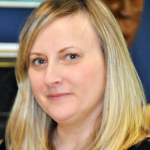The long road to inclusion
In January 2019, an article by Caroline Alphonso appeared in the Globe and Mail, titled, “Educating Grayson: Are inclusive classrooms failing students?”. Her article generated extensive commentary as well as response pieces from the public. In relaying the story of a seven-year-old child, Grayson Kahn, who had been excluded from his public school as a result of his aggressive behaviours, Alphonso struck a nerve with multiple groups, including teachers, parents, and disability communities. In many ways Grayson’s story is at the intersection of a set of complex issues in delivering quality inclusive education in Canada. Grayson is a child with disabilities who has statutorily protected human rights to access an education, as well as a range of accommodations to enable him to do so. The teachers and teaching assistants who work with Grayson have rights to safe and healthy workplaces, and Grayson’s peers have rights to access an education, as well. Alphonso identified that these complexities have generated “fierce” debates on inclusive education, including questions of whether inclusive education has “gone too far” and how to “rethink” inclusive education delivery methods and models.
Alphonso’s article references historical milestones in the evolution of inclusive education, including critical departures beginning in the 1970s and mid-to-late 1980s from institutionalization and segregation/special education movements, respectively. Public education for children with disabilities has moved from pre-1970s models of widespread exclusion and/or institutionalization, to special education models that saw the creation of segregated schools and self-contained classrooms, to more inclusive models. Today’s “inclusive” models across Canada range from legislated full inclusion of all students in common learning environments (New Brunswick) to models that retain historical remnants of full exclusion, partial inclusion, segregation and self-contained classrooms, and fully inclusive classrooms. There is therefore no widespread inclusive education in Canada; there is a mixture of models and delivery methods which continue to segregate students on the basis of (dis)ability. While there is certainly a significant increase in inclusion of students with disabilities in general education classrooms, we have not yet reached any sort of inclusion destination, nor have we “gone too far”. We are not remotely “there” yet.
As a parent of a child with profound disabilities, I have spent every year of my child’s life mired in the debates Alphonso references, and I’ve noticed they tend to center on inclusive education as a function and structure. I have been privy to every functional and structural nuance and consideration Alphonso describes: noise level and disruptions, challenges of children working at vastly different grade levels in a classroom, lack of material and human resources, safety of peers and educators, and so forth. I find myself oscillating between defensive and offensive positions—I am either defending my child’s provincial and international human rights to an inclusive education, or I find myself on the offensive, wielding its vast evidentiary basis for positive educational, social, and economic benefits as a justification for his inclusion.
Inclusive education, however, goes far beyond its functional and structural arrangements of integrating students with disabilities in a general education classroom. The UN General Comment No. 4 clarifies inclusive education as: 1) a fundamental human right of all persons with disabilities, 2) a means to achieve the full realization of the right to education and an indispensable means of realizing other human rights, 3) a principle that values the well-being of all students, respects their inherent dignity and acknowledges their needs and their ability to make a contribution to society, and finally, 4) a process that necessitates a continuing and pro-active commitment to the elimination of barriers impeding the right to education, together with changes to culture, policy and practice of regular schools to accommodate all students.
I am convinced that our preoccupation with functional and structural issues is rooted in historical and systemic failures of principle and process. The very notion that I (and countless scores of parents and advocates) continue to engage in exhausting offensive/defensive advocacy indicates that human rights and principled underpinnings of inclusion are badly lacking in public education systems and communities. There is much progress, but by no means has it “gone too far.”
While public education systems have made inclusive education policy advancements, they have much work to do in aligning policy to process. It is not sufficient to simply “include” a child in a classroom—as someone once told me, “inclusion without supports is abandonment.” This abandonment is, in my view, driving the preoccupation with functional and structural challenges of inclusive education. When public education systems fail to adequately fund inclusive education and engage in process-oriented discussions and funding supports for training and pedagogical needs, specialist services, architecture and materials, and adequate in-classroom supports, the result is frequently highly complex classrooms with challenging learning and working conditions.
Further, while there has been progress in terms of integrating children with disabilities in general education classrooms, there are significant gaps in our understanding of practices of inclusive education. An overly rigid one-size-fits-all approach not only may not suit every student, it’s a fairly lazy and poorly individualized approach. We can have process-oriented conversations about pedagogies, supports, schedules, and approaches to inclusive education without undermining its principles. Indeed, these conversations can only be had in strongly principled cultural and policy environments. But they can and must be had. Inclusive education has thus not gone too far, it is abandonment of our students and teachers that has.

Sherri Brown is Director of Research and Professional Learning at the CTF-FCE.


